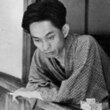After the quake: stories
Description
More Details
Gallagher, Teresa Narrator
Murakami, Haruki Author
Rubin, Jay,1941
Sims, Adam Narrator
9780307424648
9780375413902
9780804166621
Table of Contents
From the Book - First American edition.
Excerpt
Similar Titles From NoveList
Similar Authors From NoveList
Published Reviews
Booklist Review
Murakami's haunting short stories were born in the aftermath of the terrible Kobe earthquake of 1995, which, along with the Tokyo poison gas attacks, the subject of Underground [BKL F 15 01], continues to preoccupy and concern this keen and poetic writer. Spare yet richly mysterious and emotionally prismatic, these unpredictable tales explore the subtle ways the earthquake affected those who live far from its epicenter yet who are nonetheless shaken to their very core. As Frog says in "Super-Frog Saves Tokyo," a hallucinatory fable about a lonely loan collector, earthquakes make people "realize what a fragile condition the intensive collectivity known as `city' really is." Not only is the urban hive easily toppled, Murakami suggests, so are beliefs, marriages, family ties, and friendships. Baffled and disconnected, his intriguing characters stumble into revelations while gazing at a bonfire on a beach, standing beneath a brimming moon on a deserted baseball diamond, or succumbing to an embrace. Murakami magically links the mythical past, when animals spoke to humans and dreams mattered, to today's anxious world, where, tattooed by the fitful light of televisions emitting images of disaster, people stand on ever-shifting ground and valiantly offer a hand, and their love, to one another. Donna Seaman
Publisher's Weekly Review
These six stories, all loosely connected to the disastrous 1995 earthquake in Kobe, are Murakami (The Wind-Up Bird Chronicle; Norwegian Wood) at his best. The writer, who returned to live in Japan after the Kobe earthquake, measures his country's suffering and finds reassurance in the inevitability that love will surmount tragedy, mustering his casually elegant prose and keen sense of the absurd in the service of healing. In "Honey Pie," Junpei, a gentle, caring man, loses his would-be sweetheart, Sayoko, when his aggressive best friend, Takatsuki, marries her. They have a child, Sala. He remains close friends with them and becomes even closer after they divorce, but still cannot bring himself to declare his love for Sayoko. Sala is traumatized by the quake and Junpei concocts a wonderful allegorical tale to ease her hurt and give himself the courage to reveal his love for Sayoko. In "UFO in Kushiro" the horrors of the quake inspire a woman to leave her perfectly respectable and loving husband, Komura, because "you have nothing inside you that you can give me." Komura then has a surreal experience that more or less confirms his wife's assessment. The theme of nothingness is revisited in the powerful "Thailand," in which a female doctor who is on vacation in Thailand and very bitter after a divorce, encounters a mysterious old woman who tells her "There is a stone inside your body.... You must get rid of the stone. Otherwise, after you die and are cremated, only the stone will remain." The remaining stories are of equal quality, the characters fully developed and memorable. Murakami has created a series of small masterpieces. (Aug. 20) Forecast: The thematic urgency of this collection should give readers an extra reason to pick it up; Murakami's track record will do the rest. (c) Copyright PWxyz, LLC. All rights reserved
Library Journal Review
Noted Japanese author Murakami (Sputnik Sweetheart) offers six short stories set around the time of the devastating 7.2-magnitude earthquake in Kobe, which killed thousands in January 1995. The stories are very loosely woven together by passing references made to the tragic event. Focusing on the relationships between people who are all broken by life, the stories include "UFO in Kushiro," in which a salesman comes home one day to find himself abandoned by his wife, who has left him a note and later asks for a divorce; "All God's Children Can Dance," which tells the story of Yoshiya, a man born out of wedlock to a religiously zealous woman (even being told by her that his birth was "divine") who later goes out in search of his father; and "Honey Pie," which describes the longstanding friendships of three college friends, a single man and a married couple, who grow older together wondering about the state of their relationships after the couple's divorce. However, in "Super-Frog Saves Tokyo," Murakami uses earthquakes as the central theme; here a giant talking frog shows up in a man's apartment and asks him for his assistance in saving Tokyo from a major earthquake. Murakami's writing examines the state of the human condition in a manner similar to that of National Book Award winner Ha Jin, but Murakami's stories often end abruptly, leaving readers to determine for themselves how the stories are to be resolved, if at all. Public and academic libraries with collections of Murakami's work will probably want to add this one. Shirley N. Quan, Orange Cty. P.L., Santa Ana, CA (c) Copyright 2010. Library Journals LLC, a wholly owned subsidiary of Media Source, Inc. No redistribution permitted.
Kirkus Book Review
Surrealism, fantasy, and powerfully restrained emotion are the distinctive features of six spectacularly original and gripping linked stories: the latest from the internationally renowned Japanese author of Sputnik Sweetheart (2001), etc. They're ingenious dramatizations of the emotional aftershocks of the massive 1995 Kobe earthquake. Each presents a vividly realized central figure: Komuro, the complacent salesman of "ufo in kushiro," whose passive relationship with his even more passive wife is transformed, after she leaves him, into an awakened sensitivity to the dangers lurking in the everyday; Junko, a rootless young woman inexplicably drawn (in "landscape with flatiron") toward a suicidal artist obsessed with building bonfires; and underachiever Yoshiya (in "all god's children can dance"), whose baffled relationships with his abstracted mother, possibly nonexistent father, and God are set forth with crackling funereal wit. These are excellent pieces, but they're surpassed by the bittersweet "super-frog saves Tokyo," a Walter Mitty-like fantasy of empowerment enriched by delicious comic detail. Better still are "Thailand," the tale of a middle-aged woman doctor's realization, while vacationing in Bangkok, that the life she has neglected to live has formed long-dormant despairing energies into figurative (and, just possibly, literal) destructive forces; and "honey pie," in which Junpei, a withdrawn fiction writer, reshapes the tale of his own frustrations and failings into a bedtime story for the young daughter of the woman he loves-and draws from his own creation a strength he never knew he possessed. This latter is perhaps the least self-consciously "literary" story about a writer's life that anybody has ever written. It really is a wonderment to see how Murakami develops bizarre, "impossible" premises into emotionally and thematically satisfying explorations of genuine human longing, extremity, epiphany, and growth. This writer goes from strength to strength. Magnificent.
Booklist Reviews
/*Starred Review*/ Murakami's haunting short stories were born in the aftermath of the terrible Kobe earthquake of 1995, which, along with the Tokyo poison gas attacks, the subject of Underground [BKL F 15 01], continues to preoccupy and concern this keen and poetic writer. Spare yet richly mysterious and emotionally prismatic, these unpredictable tales explore the subtle ways the earthquake affected those who live far from its epicenter yet who are nonetheless shaken to their very core. As Frog says in "Super-Frog Saves Tokyo," a hallucinatory fable about a lonely loan collector, earthquakes make people "realize what a fragile condition the intensive collectivity known as 'city' really is." Not only is the urban hive easily toppled, Murakami suggests, so are beliefs, marriages, family ties, and friendships. Baffled and disconnected, his intriguing characters stumble into revelations while gazing at a bonfire on a beach, standing beneath a brimming moon on a deserted baseball diamond, or succumbing to an embrace. Murakami magically links the mythical past, when animals spoke to humans and dreams mattered, to today's anxious world, where, tattooed by the fitful light of televisions emitting images of disaster, people stand on ever-shifting ground and valiantly offer a hand, and their love, to one another. ((Reviewed July 2002)) Copyright 2002 Booklist Reviews
Library Journal Reviews
Noted Japanese author Murakami (Sputnik Sweetheart) offers six short stories set around the time of the devastating 7.2-magnitude earthquake in Kobe, which killed thousands in January 1995. The stories are very loosely woven together by passing references made to the tragic event. Focusing on the relationships between people who are all broken by life, the stories include "UFO in Kushiro," in which a salesman comes home one day to find himself abandoned by his wife, who has left him a note and later asks for a divorce; "All God's Children Can Dance," which tells the story of Yoshiya, a man born out of wedlock to a religiously zealous woman (even being told by her that his birth was "divine") who later goes out in search of his father; and "Honey Pie," which describes the longstanding friendships of three college friends, a single man and a married couple, who grow older together wondering about the state of their relationships after the couple's divorce. However, in "Super-Frog Saves Tokyo," Murakami uses earthquakes as the central theme; here a giant talking frog shows up in a man's apartment and asks him for his assistance in saving Tokyo from a major earthquake. Murakami's writing examines the state of the human condition in a manner similar to that of National Book Award winner Ha Jin, but Murakami's stories often end abruptly, leaving readers to determine for themselves how the stories are to be resolved, if at all. Public and academic libraries with collections of Murakami's work will probably want to add this one. Shirley N. Quan, Orange Cty. P.L., Santa Ana, CA Copyright 2002 Cahners Business Information.
Publishers Weekly Reviews
These six stories, all loosely connected to the disastrous 1995 earthquake in Kobe, are Murakami (The Wind-Up Bird Chronicle; Norwegian Wood) at his best. The writer, who returned to live in Japan after the Kobe earthquake, measures his country's suffering and finds reassurance in the inevitability that love will surmount tragedy, mustering his casually elegant prose and keen sense of the absurd in the service of healing. In "Honey Pie," Junpei, a gentle, caring man, loses his would-be sweetheart, Sayoko, when his aggressive best friend, Takatsuki, marries her. They have a child, Sala. He remains close friends with them and becomes even closer after they divorce, but still cannot bring himself to declare his love for Sayoko. Sala is traumatized by the quake and Junpei concocts a wonderful allegorical tale to ease her hurt and give himself the courage to reveal his love for Sayoko. In "UFO in Kushiro" the horrors of the quake inspire a woman to leave her perfectly respectable and loving husband, Komura, because "you have nothing inside you that you can give me." Komura then has a surreal experience that more or less confirms his wife's assessment. The theme of nothingness is revisited in the powerful "Thailand," in which a female doctor who is on vacation in Thailand and very bitter after a divorce, encounters a mysterious old woman who tells her "There is a stone inside your body.... You must get rid of the stone. Otherwise, after you die and are cremated, only the stone will remain." The remaining stories are of equal quality, the characters fully developed and memorable. Murakami has created a series of small masterpieces. (Aug. 20) Forecast: The thematic urgency of this collection should give readers an extra reason to pick it up; Murakami's track record will do the rest. Copyright 2002 Cahners Business Information.




































